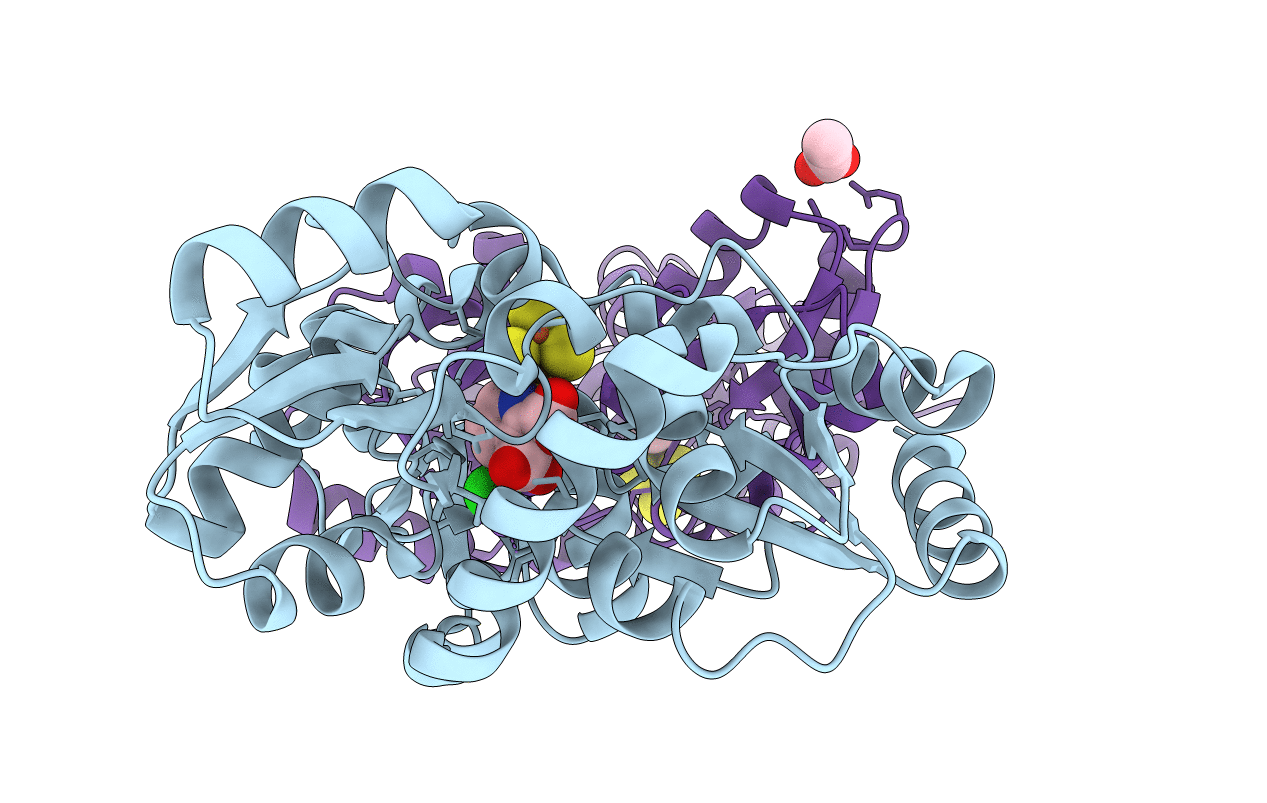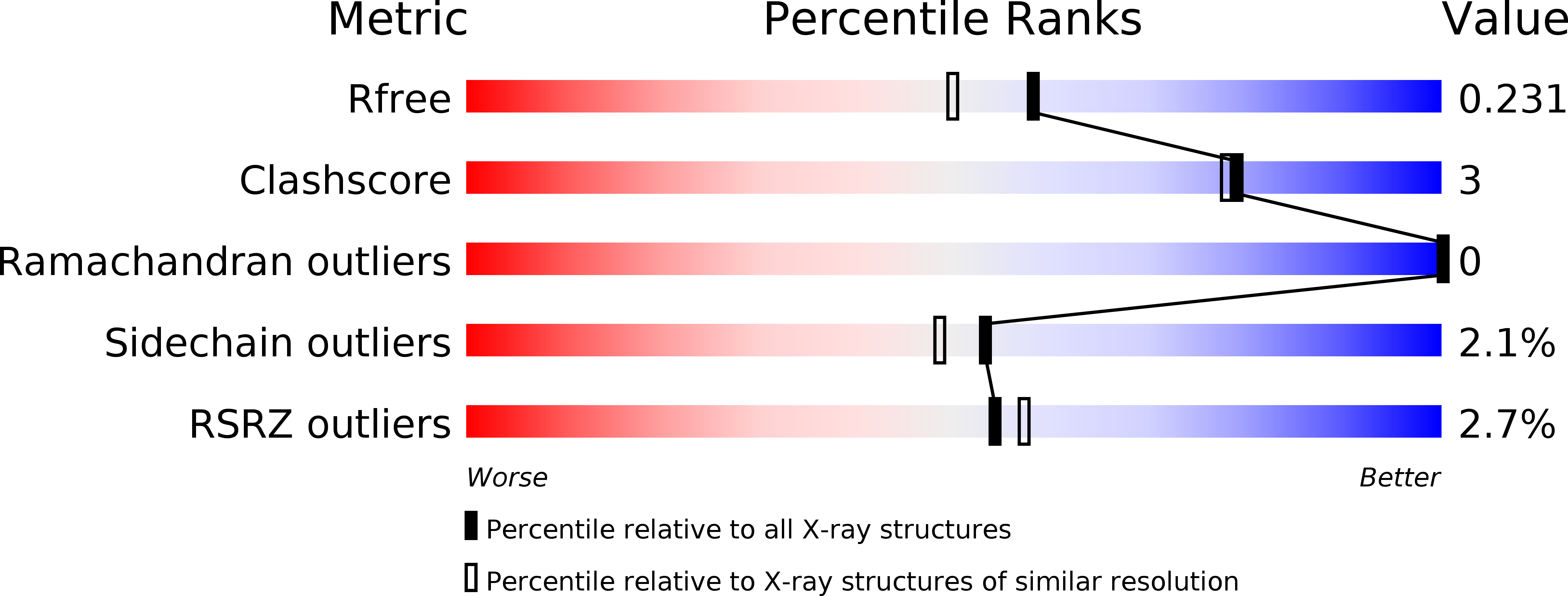
Deposition Date
2015-04-29
Release Date
2016-06-29
Last Version Date
2023-09-27
Entry Detail
PDB ID:
4ZK6
Keywords:
Title:
Crystallographic Capture of Quinolinate Synthase (NadA) from Pyrococcus horikoshii in its Substrates and Product-Bound States
Biological Source:
Source Organism:
Host Organism:
Method Details:
Experimental Method:
Resolution:
1.90 Å
R-Value Free:
0.23
R-Value Work:
0.18
R-Value Observed:
0.18
Space Group:
P 1 21 1


